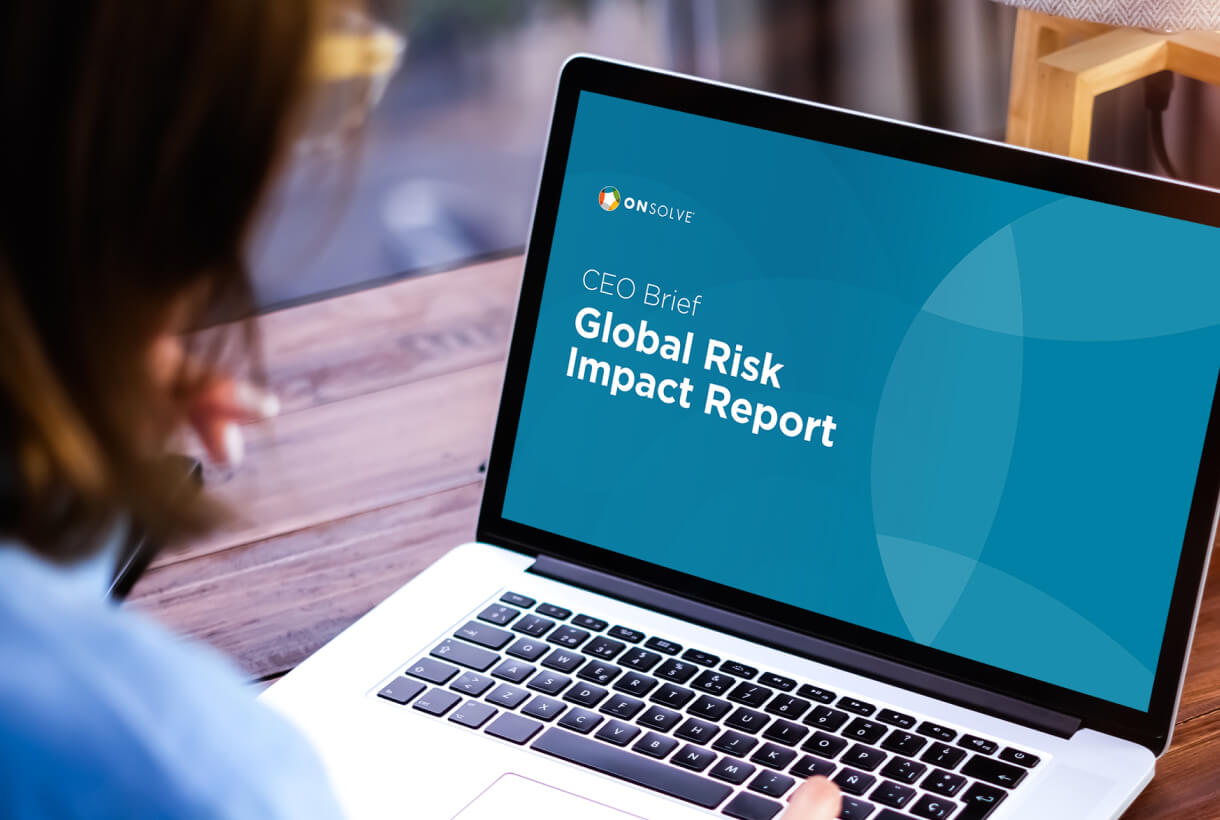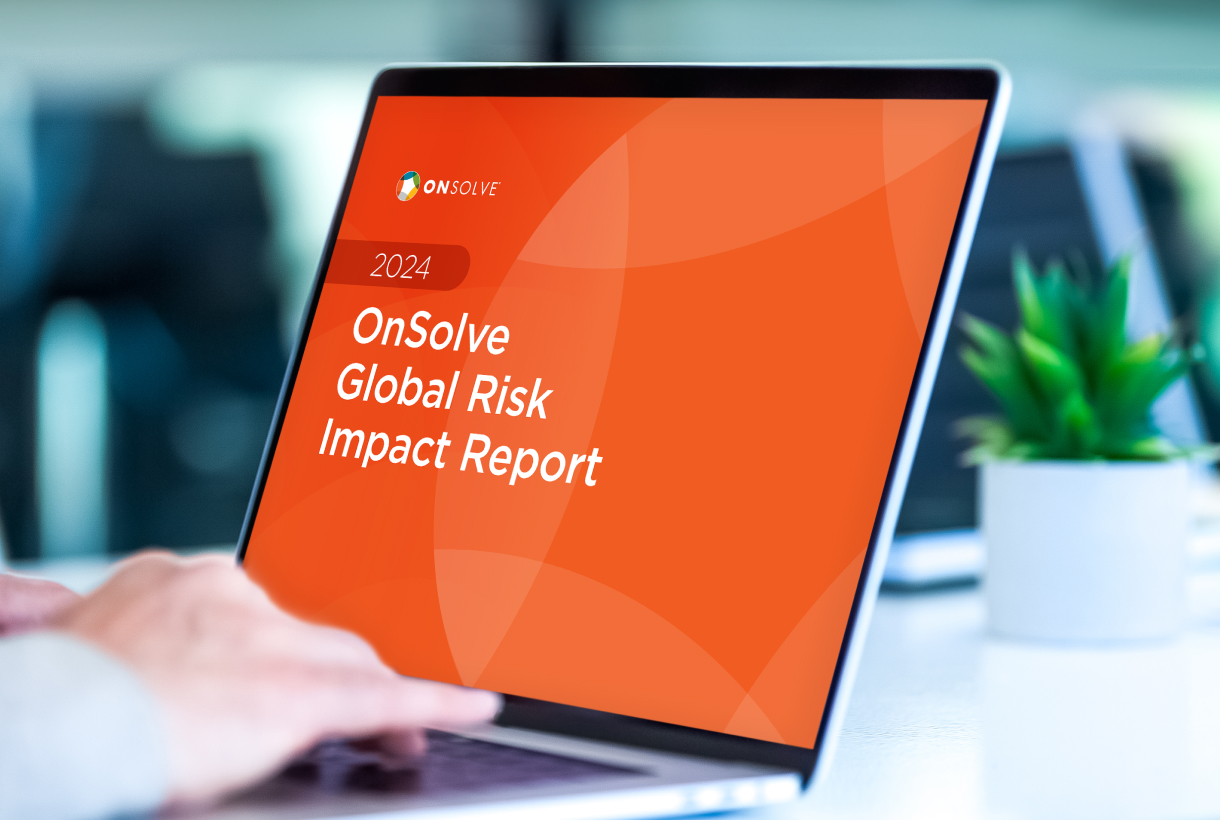Risk is everywhere—and for organizations around the globe, a crisis is not a matter of if, but when.
To dig deeper and gain a better understanding of the global risk environment and the types and frequency of events impacting organizations, OnSolve has gathered the top risks from our Risk Intelligence platform that CEOs must pay attention to going into 2023 and the business implications. The new CEO Brief: Global Risk Impact Report analyzes over 14 million events that occurred between 2020 and 2022, across 159 countries where mainstream businesses and governments operate[1].
What We Learned
OnSolve identified several key threats organizations face that are rising at an alarming rate, including:
- Crime: Reported shootings increased by 250% from 2020 to 2021.
- Climate Change: Extreme weather and natural disasters were up 47% in 2021. Floods, for example, are occurring in nontraditional areas—in Belgium, floods increased 420% from 2020 to 2021.
- Infrastructure Incidents: Transportation accidents and fire events both increased worldwide by more than 100% from 2020 to 2021.
- Civil Unrest: Protests skyrocketed in 2020 and still slightly increased from 2020 to 2021 (+4%).
These risks don’t exist in a vacuum; as one risk changes, it can have a ripple effect throughout operations. These dynamic risks and their cascading effects can spell disaster for organizations that are unprepared, from supply chain disruption to employee safety. That’s why proactive risk management needs to be a top priority for the remainder of 2022 and beyond.
4 Takeaways for CEOs and Their Teams
Ultimately, it’s the CEO’s responsibility to ensure the organization is prepared to manage risk effectively. The report outlines a few key takeaways:
- Focus on risk awareness. Although all risk cannot be avoided, the effects of critical events can be mitigated by implementing proactive strategies supported by risk intelligence and CEM technologies AND by bringing security leaders into board-level conversations. This helps strengthen organizational resilience and business continuity regardless of external factors.
- Develop a data-driven operational risk plan. Executive leadership should start by asking the right questions—what are the operation’s most critical areas? What risks threaten them and how have they have been threatened in the past? The next step is to create a framework to address the top three or four risks most likely to impact the business. Consider the worst-case scenario and work backwards to develop a “Plan B.”
- Test and validate your plan periodically. A formal risk mitigation exercise can help leaders verify the key plan components and identify who should participate and their roles and responsibilities. It can also help identify any gaps in the risk mitigation plan.
- Shift your thinking. The “unthinkable” is becoming the “norm,” and this is a trend that can’t be ignored. Executives have a fiduciary responsibility to ensure their organizations are prepared to respond to unfolding events in real time. This is where data-rich risk intelligence and critical communications technologies fortified by AI are so beneficial in protecting business continuity, as well as helping keep employees, customers, facilities and assets safe.
For an in-depth look at the research behind these findings, download the full CEO Brief: Global Risk Impact Report.
[1] OnSolve’s report analyzes the top risks that have occurred as a percentage of all events OnSolve detected from January 1, 2020 – July 1, 2022, that had the potential to impact its customers worldwide. The data in this report was gathered using the OnSolve Risk Intelligence, an AI-powered technology that monitors over 50 risk categories of physical threats across 159 countries in real time. OnSolve Risk Intelligence detected more than 14 million global events, or physical threats, from 2020 to 2022, using AI and analyst-vetted information pulled from data sources that include local fire, police or emergency medical services departments, weather reports and alters form government and non-government, verified sources, federal government agencies such as Federal Bureau Investigation, Department of Homeland Security and other crisis management entities, local, national and international news, and critical event reports from verified social media feeds. OnSolve Risk Intelligence monitors global physical threats that have an impact on its 30,000-customer base, which consists of half of Fortune 100, 40% of the Fortune 500, and 10,000 communities in the US, including state, regional, local and federal entities. OnSolve programmatically maps events to locations worldwide, determining which part of an organization might be at risk. This report aggregates to a country-level view year over year of the physical threats specific to our customers’ people and operations across their offices, plants, warehouses and office locations, and while traveling worldwide. It highlights the most significant risks impacting businesses and governments today compared to 2020 and 2021.


